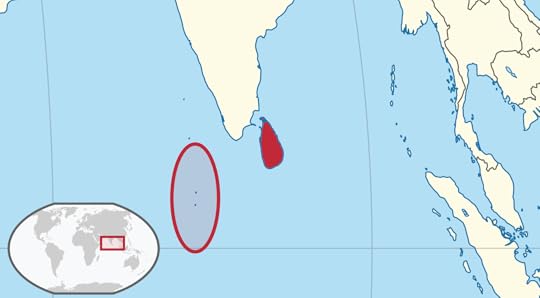Etymology gleanings for March 2018: Part 2
Thanks to all of our readers who have commented on the previous posts and who have written me privately. Some remarks do not need my answer. This is especially true of the suggestions concerning parallels in the languages I don’t know or those that I can read but have never studied professionally. Like every etymologist, I am obliged to cite words and forms borrowed from dictionaries, and in many cases depend on the opinions I cannot check. This holds for the Baltic group and any non-Indo-European language. But I am always grateful for thoughts about them; they come from native speakers and can therefore be trusted. Other than that, I do have a few things to add to the March gleanings.
So long
No doubt, sail on would be an ideal source of so long, but, as we cannot prove its existence, this hypothesis has no potential. Scandinavian så lenge ~ så længe has often been proposed as the etymon of the English phrase. Here we encounter a familiar problem: where could the Swedes or Norwegians, or Danes have picked up this greeting, or is it their own invention? Let me repeat the main points: the phrase was recorded relatively late and some facts indicate its American (“coastal”) origin.
Now the Malayan connection. In my post for 7 March 2018, I mentioned a 2004 article on this subject. Its author is Alan S. Kaye, an expert in Semitic (and several other) languages. He wrote his article in response to L. M. Boyd’s trivia column, and this is what he says: “In his column for February 23, 2004… Boyd asserts that the common colloquial or slang phrase so long derives from the speech of British soldiers in Malay Peninsula, who heard Malay saying salong, which they in turn, being Muslim, borrowed from the well-known Arabic greeting salaam….” Kaye consulted a reliable dictionary with the following result: “I did not locate any Malay word salong used to mean ‘farewell’…. I also found salam ‘greeting…. [and] became suspicious of Boyd, thinking that he had succumbed to folk etymology…. One thing still bothers me, though. Since I cannot locate the etymological connection to Malay and British soldiers, I am left wondering where Boyd read this.” I share his wonder. Other than that, knowing nothing about Malay, I can only sell his conclusion for what I bought it, as they say in Russian.
 This is Malaysia, so far, so long…. Image credit: Location of Malaysia via Vardion. CC BY-SA 4.0 via Wikimedia Commons.
This is Malaysia, so far, so long…. Image credit: Location of Malaysia via Vardion. CC BY-SA 4.0 via Wikimedia Commons.How old is Old English?
I did not mean to return to the ever-recurring comments on English versus Greek, because what I could say about this matter I have said at least twice, but one point may be worth mentioning. The age of no language can be determined. Only Old English texts are late. English is a member of the Germanic group, and Germanic means that we are dealing with an Indo-European language after it underwent the First Consonant Shift, developed a system of weak verbs, and acquired a few other well-known features. To put it differently, as long as phonetics is concerned, Germanic is Indo-European with an accent, just as German is Germanic with an accent (because of the Second Consonant Shift and some other changes). In our theory, all languages are coeval; only individual phenomena succumb to chronology. Therefore, neither Sanskrit, Greek nor Latin enjoys seniority when it comes to etymology. Assuming that the Indo-European hypothesis has some reality behind it (despite the fact that we don’t know who the oldest Indo-Europeans were, where they lived, etc.), words belonging to this family are called related only if they can be shown to be related. Greek phrēn and Engl. brain are incompatible, because neither their vowels nor their consonants match. To put it differently, we are unable to reconstruct the protoform from which the two words acquired the shape known to us. Borrowing brain from Greek is out of the question. If phrēn had existed in the speech of Germanic speakers centuries or millennia before it surfaced in texts, it would not have become brægen. At least we are unaware of any reasons why it should have changed in this direction. Besides, the English word is local, with cognates only in German and Dutch. Most probably, it was coined in that speaking area, and the etymologist’s task is to try to explain how it came up.
 I am a bear of very little brain, and long words bother me. Image credit: Winnie The Pooh by Darrell Taylor. CC BY 2.0 via Flickr.
I am a bear of very little brain, and long words bother me. Image credit: Winnie The Pooh by Darrell Taylor. CC BY 2.0 via Flickr.The l ~ d variation (Latin lacrima ~ dacrima) in connection with the word for “tear from the eye”
Yes, indeed, the variation is dialectal, but this fact does not explain anything. Reference to other languages shows that l can indeed be substituted for d, but that we knew before we launched our query. The nature of the variation (word-initially!) also has to be explained. The number of words affected by d ~ l in Indo-European is vanishingly small. In Classical Greek, d was certainly a stop, not a th-like spirant, while l must have been close to Modern Greek l. It does not seem that Greek distinguished between two sense-differentiating l’s (hard and soft, as in Russian, or “thin” and “thick,” as in some Norwegian dialects), so the riddle remains unsolved.
 Think global, etymologize local. Image credit: A chimpanzee brain at the Science Museum London by Gaetan Lee. CC BY 2.0 via Wikimedia Commons.
Think global, etymologize local. Image credit: A chimpanzee brain at the Science Museum London by Gaetan Lee. CC BY 2.0 via Wikimedia Commons.A short disquisition on vowel length in English and especially German
I would not have returned to this thorny question, but for a long comment. Those who learn German from books are told that some German vowels are short, while others are long. The parade example is bieten “to offer” versus bitten “to ask for something.” This distinction is obvious in so-called open syllables (that is, in syllables with no consonant following the vowel), and especially in dissyllables, as in the words cited above, but, if you ask an unschooled native speaker of German whether the vowel is long in words like Fluss “river” or Fuß “foot,” the response does not come at once. The situation in English is much worse. Hardly anyone defines the difference between bit and beat in terms of vowel length. Very long ago, the great German scholar Eduard Sievers defined the difference between such vowels in terms of “extendible” versus “non-extendible.” In German, this opposition works well. Even more efficient (as I know from my teaching experience) is the request to stop in the middle of the word: in Engl. beater, a pause after bea– is possible (the vowel is “long”), while in bitter a stop is impossible (the vowel is “short”). The situation is analogous in German bieten versus bitten. That is why I wrote that making people (in German) ponder the vowel length is sometimes a rather hard task. This discussion came up in connection with the relatively recent German spelling reform. It would be interesting to hear what our German colleagues think about such things.
 A lachrymose situation: Is that book called Lorna Doone of Dorna Loone? Image credit: “Poses Female Education Posing Caucasian What” by NDE. CC0 via Pixabay.
A lachrymose situation: Is that book called Lorna Doone of Dorna Loone? Image credit: “Poses Female Education Posing Caucasian What” by NDE. CC0 via Pixabay.Separate words
♦Yes, liver, the alleged source of emotions and passions, would be a good cognate of the verb to live, but the desired connection cannot be made out. My reference to fast livers was a joke: I had never discussed those words.
♦In one of the comments, a suggestion was made that the etymon of path should be sought in Tamil, rather than Sanskrit (see the post for 4 November 2015). This may be true, but, as told in the post, the origin of path is obscure. The Indo-European form cannot be reconstructed (initial p– should go back to non-Germanic b-, but outside sound-imitative and sound-symbolic words, b– was practically nonexistent in the reconstructed Indo-European). Prehistoric contacts with Indo-Iranian speakers make one think of Scythians. Yet their ancient language has not come down to us.
 Tamil is spoken here. Any road from these parts to the English word path? Image credit: Sri Lanka in its region by TUBS. CC BY-SA 3.0 via Wikimedia Commons.
Tamil is spoken here. Any road from these parts to the English word path? Image credit: Sri Lanka in its region by TUBS. CC BY-SA 3.0 via Wikimedia Commons.♦Are carouse, carousel and German Grusel– “horror” related? See the post for 5 April 2017 (carousal). No, they are not. Carouse goes back to German gar aus “no heel taps!” (as explained in the post referred to above). Grusel-, which is akin to Grauen and Grausen (approximately the same meaning), is a Germanic word (compare Engl. gruesome), while carousel is Romance (Italian). For some interesting information see Friedrich Fried’s 1964 book A Pictorial History of Carousel.
♦♦A query from our reader. “I read a lot of ‘sceptical’ material online and wondered recently about the source of the word woo, used derogatorily to refer to the uncanny, the mystical, etc. I found that it is generally believed that the usage is from something like ‘woo-oo-oo’ in imitation of the eerie background music of films.” Any ideas about this piece of voodoo etymology? I have some but will keep them to myself (for the time being).
Featured image: Grandfather, father, and son. This is not an image of any three Indo-European languages. Image credit: “Family Generations Great-Grandparents Son Father” by brfcs. CC0 via Pixabay.
The post Etymology gleanings for March 2018: Part 2 appeared first on OUPblog.

Oxford University Press's Blog
- Oxford University Press's profile
- 238 followers



